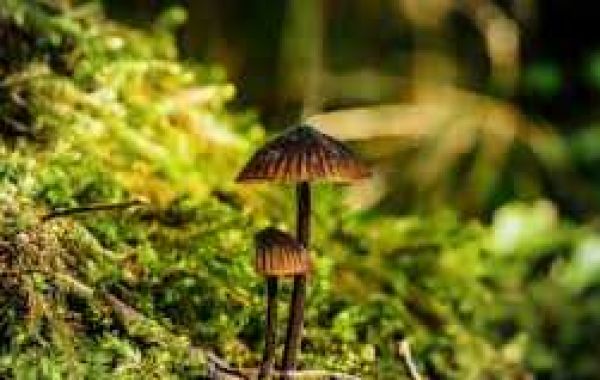To this day, many individuals who use psychedelic drugs feel they grant a certain kind of perspicacity, and the number of people who are using psychedelics appears to be growing. Several clinical trials are now examining the effects of these drugs, while some cities and states are considering decriminalizing “magic mushrooms” that contain the psychotropic compound psilocybin.
While under the influence of the drug, users typically experience changes in mood and perception, a sense of oceanic boundlessness, radically altered reasoning and thinking, and auditory and visual hallucinations. Once the acute effects of the drug subside, however, many people feel as though they have a heightened sense of empathy and self-awareness, which is why these drugs have generated much interest from many medical researchers. While this is not an endorsement by any means—since far more research needs to be conducted before medical science can definitively say these drugs are effective—preliminary clinical trials indicate that these aftereffects may have therapeutic benefits, especially for those who are confronting the limits of their mortality.
Perhaps some of the most promising research into psychedelics examines how these drugs affect those who are in the latter stages of a terminal disease and experiencing existential distress due to their impending death. Several studies have shown that psychedelics such as psilocybin (the active ingredient in “magic mushrooms”) are effective at producing antidepressant and anxiolytic effects by letting these individuals come to terms with their own mortality.
Not only are these findings relatively new, but they are also supported by strong data sets. This is important because many Western physicians and medical researchers would have looked askance at such claims about psilocybin had the evidence not been so strong.
For decades, even the suggestion that psilocybin and other psychedelics possessed therapeutic potential was often seen as an endorsement of not only the drugs themselves but the counterculture of the 1960s. And while many researchers continue to associate the use of psychedelics like psilocybin with this counterculture, the stigmas are beginning to subside as more research is published that strongly indicates that psilocybin does have therapeutic potentials.
Cultural stigmas surrounding the use of drugs like psilocybin are not the only obstacles to research. There are also legal restraints. At this time, psilocybin is still considered a Schedule 1 drug by the Food and Drug Administration (FDA), which means there are significant regulatory barriers preventing researchers from obtaining and testing the compound. The good news, however, is that the FDA has designated psilocybin as a breakthrough therapy on two separate occasions, most recently for the treatment of a major depressive disorder. Breakthrough therapy designation, according to the FDA, “is intended to expedite the development and review of drugs for serious or life-threatening conditions.”
article continues after advertisement
How Does Psilocybin Affect the Brain?
Psilocybin is a naturally occurring tryptamine compound found in at least 100 species of mushroom. When consumed orally, which is the typical route of administration, psilocybin is converted into psilocin through hepatic metabolism. Psilocin, not psilocybin, appears to be the pharmacologically active substance responsible for the psychotropic effects of “magic mushrooms.”
Psilocin has a high affinity for serotonin (5-HT) receptors. It is a partial agonist of 5-HT2A receptors (40 percent activation efficacy), and also binds to 5-HT2C, 5-HT1A, and 5-HT1B receptors in the thalamus and prefrontal cortex (PFC). As the thalamus is responsible for processing sensory input, it seems likely that the hallucinations associated with psilocybin use stem from the activation of receptors in this part of the brain. Meanwhile, because serotonin receptors throughout the PFC help regulate numerous crucial functions throughout the body, including one’s circadian rhythm, memory, social behavior, and mood, it is believed that psilocybin can affect these functions, as well.
Psilocybin and other psychedelics, like lysergic acid diethylamide (LSD) and mescaline, also activate 5-HT1A and 5-HT2A receptors in the PFC, which in turn have downstream effects on serotonergic and dopaminergic activity. The increase in dopamine is believed to be part of the reason for some of the psilocybin’s effects on mood, such as euphoria, and the commonly reported phenomenon of depersonalization.
Additionally, the stimulation of postsynaptic 5-HT2A receptors found in pyramidal neurons located in the deepest layers of the cortex leads to increased levels of extracellular glutamate in the PFC. This release of glutamate activates AMPA (α-amino-3-hydroxy-5-methyl-4-isoxazole propionic acid) and NMDA (N-methyl-D-aspartate) receptors. The activation of these three receptors (5-HT2A, AMPA, and NMDA receptors) is believed to then cause an increase in brain-derived neurotrophic factor (BDNF). Increased BDNF is strongly associated with improved cognitive functioning, mental health, and memory.
Repeated doses of some psychedelics have also been linked with the downregulation of 5-HT2A receptors in the PFC, which may contribute to the therapeutic effects of psychedelics like psilocybin. 5-HT2A density was found to be significantly higher in post-mortem samples from patients with major depression. Studies in rodent models, meanwhile, have shown a strong correlation between increased 5-HT2A receptor density and anxiety-like behavior.
article continues after advertisement
What Do the Studies Say?
There have been numerous studies involving psilocybin that I have touched upon in a previous post. To quickly summarize, these studies have found that psilocybin may be effective at treating:
Clinical anxiety and depression caused by life-threatening cancer diagnoses
Obsessive-compulsive disorder
Addiction to alcohol or nicotine
Additionally, Griffiths et al. reported that a majority of individuals who took psilocybin experienced an improvement in mood and attitude. Many also felt that the experience was one of the most meaningful events in their lives. This was not just a passing phenomenon. After more than one year, 58 percent still ranked the psilocybin session as one of the top five most meaningful experiences in their lives; 64 percent said it increased their sense of well-being or life satisfaction to either a moderate or an above-moderate degree; and 61 percent believed the experience was associated with a positive behavioral change.
Is Psilocybin Safe?
For psilocybin, the prevalence of abuse and serious adverse events is low in comparison to other major classes of abused drugs, and researchers have found that any significant association between the lifetime use of psychedelics and an increased likelihood of mental illness or suicidal thoughts, plans, or attempts simply does not exist. Moreover, psilocybin has a very low risk of overdose toxicity. It is estimated that a lethal dose would have to be 1,000 times larger than an effective dose. However, psilocybin can produce side effects like hypertension, tachycardia, nausea, vomiting, anxiety, vertigo, confusion, and increased sensitivity to light due to the dilation of the pupils.
It should also be noted that the subjective experience of being under the influence of psychedelics (often called a “trip”) is highly variable and influenced by an individual’s mindset and their environment. These two components are known as “set and setting,” and they can have a significant effect on one’s experience, even when the same individual has been given the same doses. A positive experience may inspire life-changing epiphanies and grant individuals a greater perspective on life. A negative experience may result in disturbing thoughts or hallucinations, which may lead to anxiety, disorientation, delirium, and, in extreme circumstances, temporary psychosis. Researchers have found that they can significantly diminish the likelihood of negative experiences by providing patients with more preparation and interpersonal support during the period of drug action.
article continues after advertisement
Though there remains a great deal of stigma surrounding the use of psychedelics, research into these drugs has shown that they do hold a great deal of promise so long as they are administered in a controlled and clinical environment or under the guidance of individuals who are experienced in the use of psychedelics. Whether or not these findings will encourage the loosening of restrictions and regulations in the United States is a question which we will only be able to answer as more research is published, and the case for the use of psychedelics becomes stronger.
Dr. Ahmad reports no conflict of interest. He is not a speaker, advisor, or consultant and has no financial or commercial relationship with any biopharmaceutical entity whose product/device may have been mentioned in this article.
website:- https://magicmushroomdispensary.ca/








